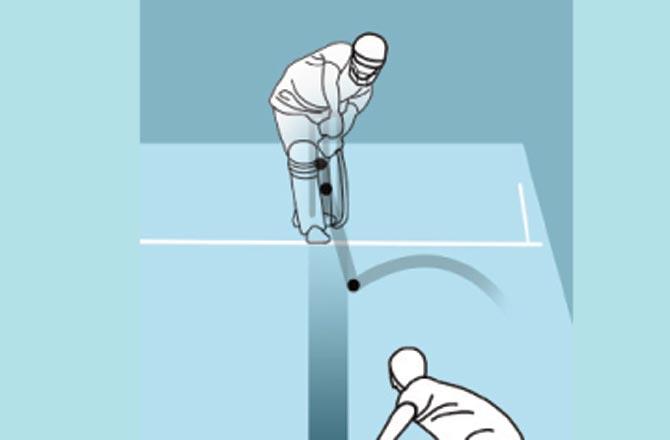Rising stakes in professional sport have fuelled the tilt towards technology, and football's Video Assistant Referee is the latest introduction

Football
The VAR system, introduced at a World Cup for the first time in this edition, is a two-way communication system between the on-field referee and a team of officials at the back-end monitoring the ground action on their computer screens through a series of cameras. VAR only intervenes if the referee has made an error in the following areas: goals — to view offsides and shirt-pulling episodes inside the dee; penalty kicks — to award or revoke a spot kick; red cards — to view dangerous tackles and bad conduct; mistaken identity — to help to identify the correct player in the case of fouls or awarding a card. The VAR can be brought into effect in two ways — the referee can seek a VAR review on an on-field incident by making a rectangle sign, and/or the VAR can inform the referee if any infringement is spotted on camera.

ADVERTISEMENT
Some crucial VAR calls at this World Cup:
June 16 France vs Australia
VAR was used for the first time here when it alerted the referee to a possible penalty for France’s Antoine Griezmann being fouled by Joshua Risdon. The referee agreed.
June 22 Brazil vs Costa Rica
Brazil striker Neymar’s theatrics have not impressed the audience and VAR alike. Against Costa Rica, he tried to earn a penalty with a dubious dive, but VAR caught his bluff.
June 25 Iran vs Portugal
Portugal skipper Cristiano Ronaldo elbowed Iran’s Morteza Pouraliganji behind the referee’s back. A VAR intervention saw the referee flash a yellow card to Ronaldo.
Verdict: The biggest problem with the VAR is its lack of connect with the spectators, who are left frustrated, and even abusing, when they feel an incident has gone unnoticed or has been ignored. Besides, players should also have a say in obtaining a VAR review (like in hockey) if they feel something has gone wrong. Putting up details of a VAR-checked incident on the giant in-stadia screen can eliminate doubts and build spectator faith in the new system.
Tennis & Badminton
The Hawk-Eye system in tennis and badminton is used by players to review calls made by line judges. The technology uses a number of high-speed cameras set up around the court, which builds a 3D image to track whether a ball/shuttle has landed in or out. It boasts of an accuracy of up to one millimetre. Besides, Hawk-Eye also helps to provide instant replays to chair umpires in tennis who would like to review foot faults. In tennis, a player is allowed three incorrect challenges per set and gets an extra one in case of a tie-breaker. In badminton, a player can make up to two wrong calls per game, which means a maximum of six wrong calls per match.
Verdict: Big servers sending the ball at 120+ MPH in tennis, and top smashes in badminton crossing 150 MPH, it’s tough for the naked eye to judge close-line calls, so Hawk-Eye is a hit. In badminton, additional shuttle drift may lead to inaccuracies though.
2007
The year Hawk-Eye was introduced at Grand Slams
Hockey
The video referral system was introduced by the International Hockey Federation (FIH) at the 2009 Champions Trophy in Australia, and despite some initial criticism, it is now widely accepted by both players and fans alike. The video referral can be used in two ways: players can ask the on-field umpires to refer decisions inside the 23-metre area relating to penalty corners, penalty strokes or other infringements; the on-field umpires can seek a video referral of an incident that they may have missed or are unsure about. The video umpire then views the incident on his screen and conveys the outcome to the referee. Each team gets only one video referral.
Verdict: The primary reason why the video referral system has clicked is because of its transparency. The conversation between the on-field umpire and the video umpire is played out on the TV screen, as is the final decision by the video umpire.
2010
The World Cup where video referral system was introduced

Cricket
Cricket’s version of the VAR is the Decision Review System (DRS). A team can seek a review by the DRS by asking the on-field umpire to refer his decision to the third umpire, who uses three electronic applications — Snickometer, Hot-spot, Hawk-Eye — to determine whether or not a player is out. The Snickometer uses highly sensitive microphones to detect even the slightest edge off a bat; Hot-spot uses infrared, heat-sensing cameras to determine exactly where the ball has struck a batsman — on the bat or pad or gloves, etc. Hawk-Eye uses virtual ball-tracking technology to predict the trajectory of a ball after it has struck a batsman’s pads, and determine whether or not it would have gone on to hit the stumps. A team can make no more than two unsuccessful DRS reviews per innings in a Test, and only one in an ODI or T20I.
Verdict: The DRS has had its fair share of criticism, with the BCCI being one of its harshest critics, as it felt that the system is not 100% accurate. Accuracy of the ball-tracking system and Hawk-Eye, particularly when the ball is moving laterally due to spin or swing, has been criticised, while some suggest that its cost, which is approximated $50,000 per match, is a deterrent too. However, all parties are now on board with the ICC, and the system continues to be in use with more success than failure.
2009
The year DRS was officially used by the ICC in a Test
Catch up on all the latest Crime, National, International and Hatke news here. Also download the new mid-day Android and iOS apps to get latest updates
 Subscribe today by clicking the link and stay updated with the latest news!" Click here!
Subscribe today by clicking the link and stay updated with the latest news!" Click here!







